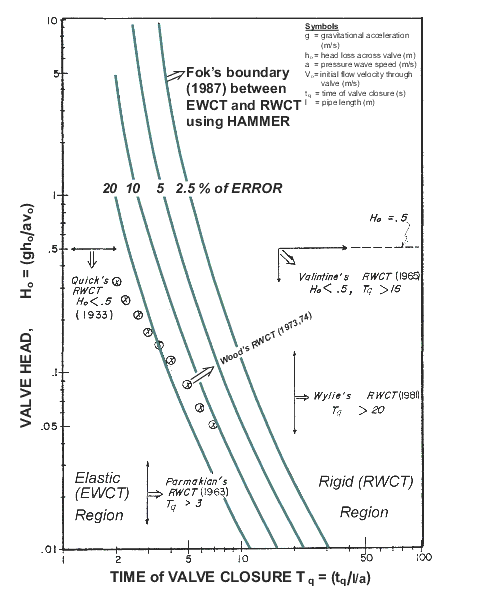Rigid Column versus Elastic Theory
Prior to the widespread use of computers, the subject of rigid water column-theory was very popular. Substantial effort was devoted by numerous researchers and engineers to improve its accuracy and to determine the range of its application. Figure 14-5: When to Use Elastic versus Rigid Column Theory for a Valve Closure is a dimensionless plot of valve closure time (divided by half the characteristic time, L/a) versus the ratio of initial head to transient head in a frictionless (or very low friction) system. The graph shows that different researchers, beginning in 1933, proposed various criteria to determine when an elastic solution is necessary and when a rigid-column solution is sufficiently accurate.
The thick black lines were obtained from computer simulations using both methods and showing the level of error resulting from using RWCT instead of EWCT (Fok, 1987). The error resulting from RWCT instead of EWCT is shown graphically in Figure 14-5: When to Use Elastic versus Rigid Column Theory for a Valve Closure. EWCT correctly accounts for fluid compressibility, resulting in a significantly higher estimate of the maximum transient head than RWCT. Bentley HAMMER V8i solves every problem using elastic theory and the MOC for maximum accuracy.
Figure 14-5: When to Use Elastic versus Rigid Column Theory for a Valve Closure

